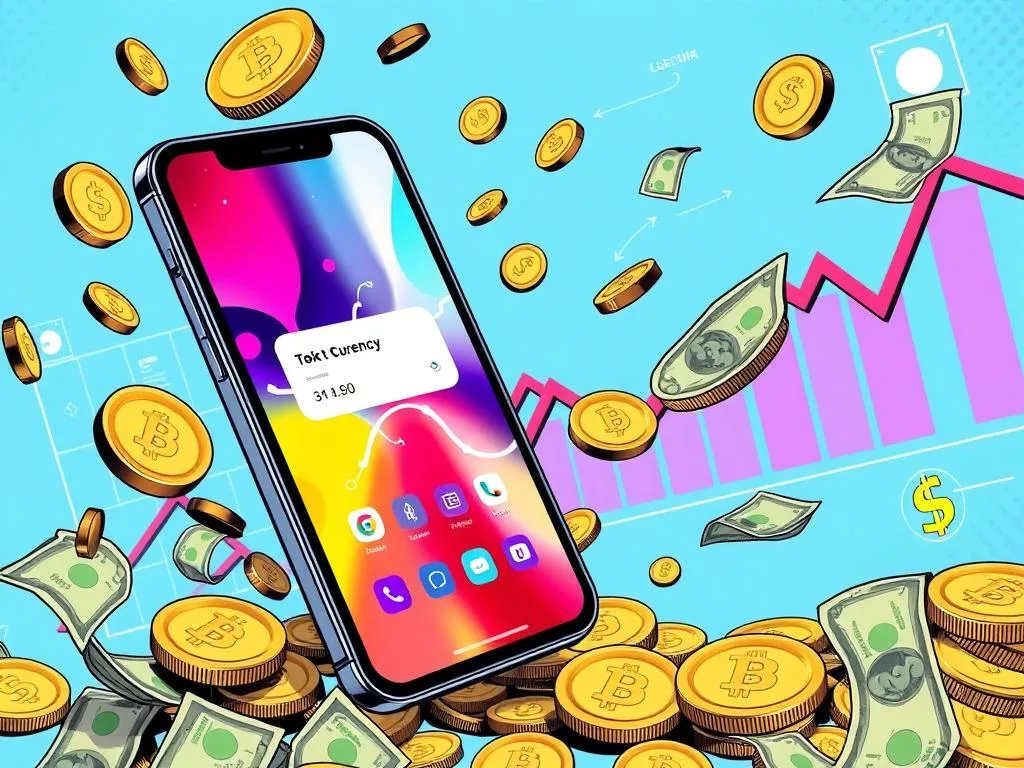I use Venmo a lot and often deal with its fees and limits. It’s key to know these to manage my money well and avoid extra costs. Venmo makes sending and getting money fast, but the instant transfer comes with a price.
In this article, I aim to help you understand these fees and limits better. This way, using Venmo can be easier and less stressful.
For more tips on using Venmo, check out this guide. It goes into more detail about the app’s features and how to use them.
Understanding Venmo: A Brief Overview
Venmo is a free app for mobile payments. It lets people send and get money from friends, family, and stores easily. It also has social features to share payment details in a fun way.
Users can connect different accounts to Venmo, like bank accounts and cards. Most transactions are free, making it great for everyday use. Knowing Venmo’s fees is key for using it well.
Using a credit card for payments costs 3% per transaction. But, payments from bank or debit cards are free. Also, there’s a 1.75% fee for instant transfers, with a minimum of 25 cents and a cap of $25. These details affect how much you pay and your experience with Venmo.
I can send up to $60,000 a week on Venmo after verifying, but the first limit is $299.99. Transfers to banks start at $999.99, going up to $19,999 after verification. For more on fees and limits, check the official Venmo fee structure. This info helps users get the most out of Venmo.
Venmo Instant Transfer: Fees and Limits
Venmo instant transfer is fast, but knowing the fees is key. Venmo charges a 1.75% fee on transfers. This fee ranges from $0.25 to $25, so it’s good to think about the amount first.

The instant transfer is quick, usually taking 30 minutes. Standard transfers are free but take 1-3 business days. Knowing this helps me choose when I need my money fast.
Venmo has limits to keep things safe. Unverified accounts can spend up to $299.99 a week. Verified accounts can send up to $60,000 weekly. Instant transfers for verified accounts have a weekly limit of $50,000. It’s important to know these limits for big transactions.
Each instant transfer for verified accounts has a $10,000 limit. This keeps my transactions safe from fraud. If I need higher limits, I can reach out to Venmo’s customer support.
Standard Transfer vs. Instant Transfer
Understanding digital payment options is key for good money management. Venmo offers two main transfer types: standard and instant. Each has its own purpose and benefits for different users.
The standard transfer is a budget-friendly choice. It lets users send money without fees. It takes one to three business days to process. Weekends or bank holidays can delay it.
Even standard transfers can be reviewed, which might freeze funds temporarily.
The instant transfer is for those needing money fast. It gets money to you in under 30 minutes. But, it costs more. Venmo charges a 1.75% fee, with a $0.25 minimum and a $25 maximum.
This option is great for urgent needs, even with the extra cost.
To sum up the differences, here’s a table:
| Feature | Standard Transfer | Instant Transfer |
|---|---|---|
| Fees | Free | 1.75% (min $0.25, max $25) |
| Transfer Time | 1-3 business days | Under 30 minutes |
| Review Process | Possible delays due to reviews | Possible delays due to reviews |
Choosing between standard and instant transfers depends on urgency and fee tolerance. Both are useful in the Venmo system for different needs.
Venmo Transfer Limits Explained
It’s important to know about Venmo transfer limits for smooth transactions. If you haven’t verified your identity, you can send up to $999.99 a week. Verified users can send up to $19,999.99, giving them more freedom with their money.
Every transfer on Venmo can’t be more than $5,000. If you need to send more, you’ll have to split it into smaller amounts. Instant transfers are fast, arriving in 30 minutes, but they cost between $0.25 and $25.
Here’s a quick summary of Venmo’s transfer limits:
| User Type | Weekly Sending Limit | Weekly Bank Transfer Limit | Individual Transfer Limit |
|---|---|---|---|
| Unverified User | $299.99 | $999.99 | $5,000 |
| Verified User | $60,000 | $19,999.99 | $5,000 |
| Unverified Business | $2,499.99 | $999.99 | $5,000 |
| Verified Business | $25,000 | $49,999.99 | $10,000 (Instant to Debit Card) |
Venmo’s limits change every week based on your activity. Keeping your identity verified helps you use more money. Venmo can change these limits at any time.
How to Avoid Venmo Fees
To avoid Venmo fees, I use certain transfer options. Linking a bank account or debit card to my Venmo account is key. This way, I can make free transactions, unlike the 3% fee for credit card payments.
Choosing standard transfers over instant ones is another smart move. Standard transfers are free and take one to three days. Instant transfers, on the other hand, cost 1.75% with a $0.25 to $25 fee. So, I always go for standard transfers if I can.
Also, loading money to my Venmo balance helps me dodge transaction fees. This method lets me send money without extra charges. It’s super helpful for sending money to friends, where avoiding fees is easy.
In conclusion, knowing about the different transfer options helps me manage my Venmo use wisely. By picking the no-fee options, I keep my costs down.
Securing Your Venmo Account
In today’s digital world, keeping my financial info safe is key. A secure Venmo account keeps my money safe and prevents identity theft. Venmo has many security features to keep my info safe.
Enabling two-factor authentication adds extra security. It asks for a verification code, along with my password. This makes it harder for others to get into my account. I also set my privacy to “private,” so only trusted people can see my transactions.

Keeping a small balance in my Venmo account is smart. I move big amounts to my bank account to stay safe. This way, I avoid big problems if someone tries to steal my identity.
Phishing scams are a big danger. I always check who’s asking for my personal info or trying to rush me about my account. Using strong, unique passwords helps keep my account safe from hackers.
By following these steps, I keep my Venmo account safe. I can use digital payments without worry. Being careful and informed helps protect me from identity theft and makes using Venmo better.
Common Issues with Venmo Transfers
When I use Venmo, I often face issues that slow down my transactions. One big problem is when funds are marked as “pending.” This usually happens when Venmo checks the account, like if it has limits or if the amount is big. It’s key to make sure my bank account info is right and that it’s good for the transfers I want to do.
Error messages can also cause trouble during transactions. To fix this, I check if my Venmo account is verified. Unverified accounts have smaller limits and might run into more problems. If I keep having issues, I might try linking a different bank account or use the Venmo debit card. This can make transfers easier and avoid some problems.
Fixing these common Venmo transfer issues takes a few steps. First, I make sure my account details are correct. Then, I understand the limits of transfers. And sometimes, I use other ways to get my money out. Knowing these tips helps me use Venmo better.

